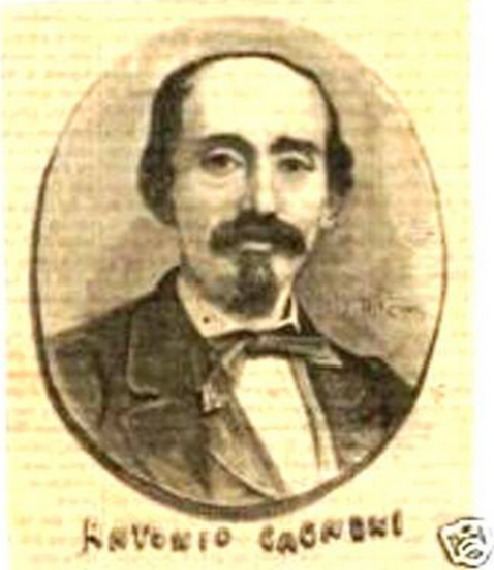Name Antonio Cagnoni Role Composer | ||
 | ||
Compositions Don Bucefalo, Don Bucefalo, Re Lear, Re Lear, Messa per Rossini, Messa per Rossini, Messa per Rossini: IIc Sequentia: Quid sum miser, Messa per Rossini: IIc Sequentia: Quid sum miser Similar People Gaetano Gaspari, Teodulo Mabellini, Carlo Coccia, Antonio Bazzini, Gioachino Rossini | ||
Don bucefalo antonio cagnoni
Antonio Cagnoni (8 February 1828 – 30 April 1896) was an Italian composer. Primarily known for his twenty operas, his work is characterized by his use of leitmotifs and moderately dissonant harmonies. In addition to writing music for the stage, he composed a modest amount of sacred music, most notably a Requiem in 1888. He also contributed the third movement, Quid sum miser, to the Messa per Rossini, a collaborative work created by thirteen composers to honor Gioacchino Rossini.
Contents

Don bucefalo oper von antonio cagnoni
Life and career
Born in Godiasco, Cagnoni first studied music composition privately in Voghera. He then studied at the Milan Conservatory where his first three operas, Rosalia di San Miniato (1845), I due savoiardi (1846), and Don Bucefalo, were premiered while he was a student. The latter work was particularly well received and enjoyed successful stagings at the Teatro Nacional de São Carlos (1850), Teatro di San Carlo (1853), the Teatro della Canobbiana (1854), and the Teatro Regio di Parma (1860) among others. He went on to compose 16 more operas and a pastiche, of which his most successful were Michele Perrin (1864), Claudia (1866), Un capriccio di donna (1870), Papà Martin (1871), and Francesca da Rimini (1878). His last opera, Re Lear, was completed in 1895 but did not premiere until 2009 when it was mounted at the Festival della Valle d'Itria.
In addition to his composition work, Cagnoni served as the maestro di cappella at the Vigevano Cathedral from 1852-1879 and served in the same capacity at the Novara Cathedral from 1879-1888. He became the director of the Civico Istituto Musicale in Bergamo in 1888, serving in that capacity until his death, in Bergamo, eight years later.
